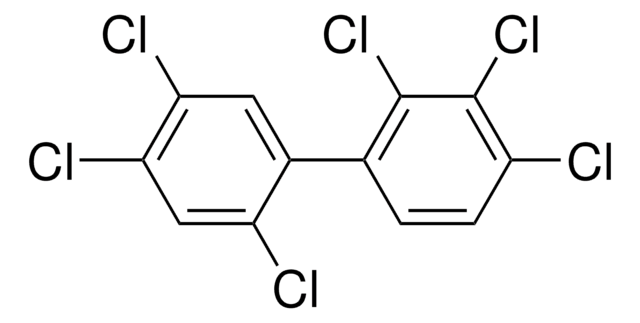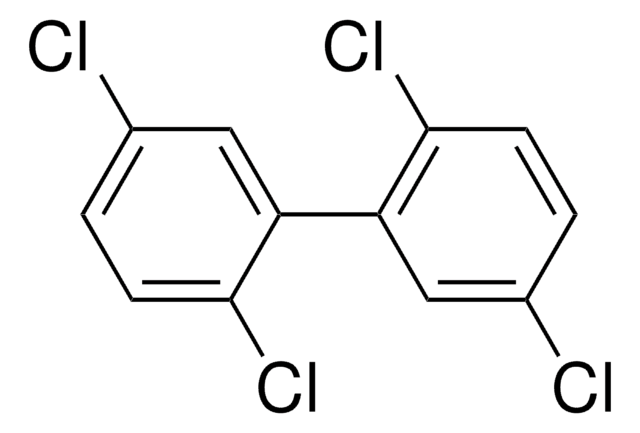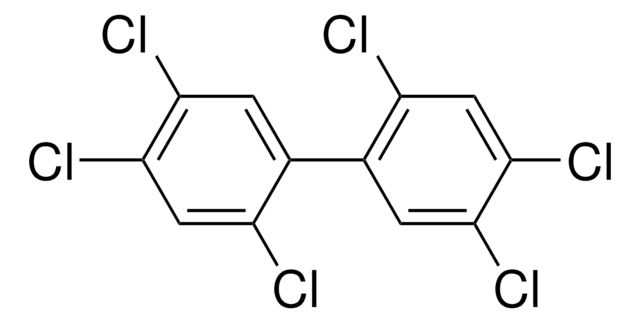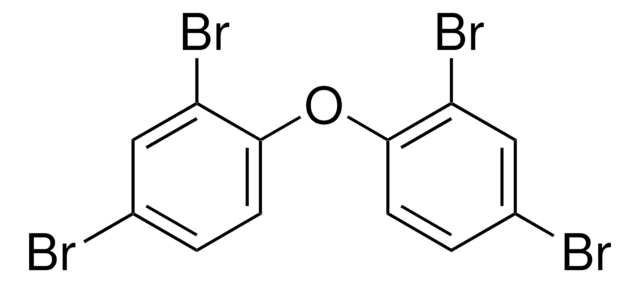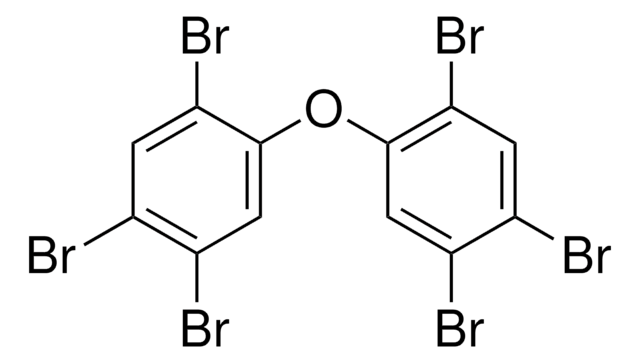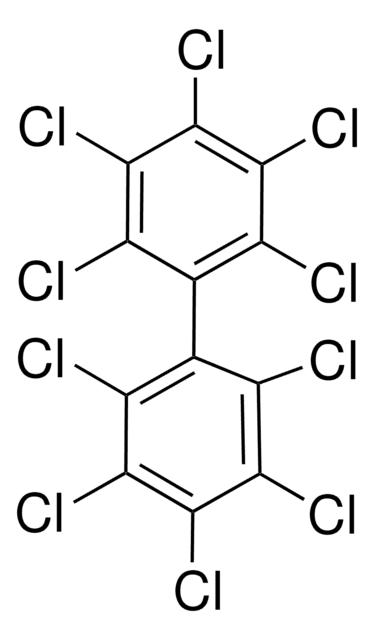BCR297
2,2′,4,4′,5,5′-Hexachlorobiphenyl (IUPAC No. 153)
BCR®, certified reference material
동의어(들):
2,2′,4,4′,5,5′-Hexachlorobiphenyl
로그인조직 및 계약 가격 보기
모든 사진(1)
About This Item
실험식(Hill 표기법):
C12H4Cl6
CAS Number:
Molecular Weight:
360.88
Beilstein:
1990497
Ballschmiter 번호:
153
MDL number:
UNSPSC 코드:
41116107
PubChem Substance ID:
NACRES:
NA.24
추천 제품
Grade
certified reference material
Agency
BCR®
제조업체/상표
JRC
형식
neat
저장 온도
2-8°C
SMILES string
Clc1cc(Cl)c(cc1Cl)-c2cc(Cl)c(Cl)cc2Cl
InChI
1S/C12H4Cl6/c13-7-3-11(17)9(15)1-5(7)6-2-10(16)12(18)4-8(6)14/h1-4H
InChI key
MVWHGTYKUMDIHL-UHFFFAOYSA-N
유사한 제품을 찾으십니까? 방문 제품 비교 안내
분석 메모
For more information please see:
BCR297
BCR297
법적 정보
BCR is a registered trademark of European Commission
신호어
Warning
유해 및 위험 성명서
예방조치 성명서
Hazard Classifications
Aquatic Acute 1 - Aquatic Chronic 1 - STOT RE 2
Storage Class Code
11 - Combustible Solids
WGK
WGK 3
Flash Point (°F)
Not applicable
Flash Point (°C)
Not applicable
가장 최신 버전 중 하나를 선택하세요:
Cristina L Quinn et al.
Environment international, 49, 83-91 (2012-09-18)
Concentrations of persistent organic pollutants (POPs) in Inuit populations have been observed to decrease over the last decade. The main objective of this study was to develop a methodology to quantify the potential influence of intergenerational dietary transitions on human
Xue Shi et al.
Journal of proteome research, 11(7), 3805-3815 (2012-06-13)
Polychlorinated biphenyls (PCBs) are persistent organic pollutants and have been associated with abnormal liver enzymes and suspected nonalcoholic fatty liver disease (NAFLD), obesity, and the metabolic syndrome in epidemiological studies. In epidemiological surveys of human PCB exposure, PCB 153 has
Lars Rylander et al.
Chemosphere, 88(7), 828-831 (2012-05-02)
Persistent organochlorine pollutants (POPs) have in epidemiological studies been associated with health hazards. The exposure window might be crucial and it is, accordingly, important to analyze exposure concentrations in samples collected at the window of interest. This makes the use
Omar Cauli et al.
Toxicology, 311(1-2), 61-68 (2012-12-12)
Polychlorinated biphenyls (PCBs) and methylmercury (MeHg) are persistent organic pollutants accumulating in the food chain. Pre- and neonatal exposure to these neurotoxicants may affect brain development and lead to long-lasting alterations in cerebral function, which can result in motor alterations
Beatriz Valera et al.
Neurotoxicology, 33(5), 1067-1074 (2012-12-12)
Studies conducted in the Faeroe Islands and Japan suggest a negative impact of mercury on heart rate variability (HRV) among children while the results regarding blood pressure (BP) are less consistent. To assess the impact of mercury on HRV and
자사의 과학자팀은 생명 과학, 재료 과학, 화학 합성, 크로마토그래피, 분석 및 기타 많은 영역을 포함한 모든 과학 분야에 경험이 있습니다..
고객지원팀으로 연락바랍니다.